


June 30, 2024 marks the first anniversary of the release of Marathi film Baipan Bhari Deva. With notable gross box office collections of ₹92 Cr, Baipan Bhari Deva is one of the top 2 highest grossers of Marathi cinema, along with Sairat (the rank would depend on whether one looks at gross or nett collections, given that Sairat released in the pre-GST regime, when Marathi films were exempt from entertainment tax in the state of Maharashtra). Baipan Bhari Deva got a respectable opening (₹1 Cr nett on its release day), but managed to have an extended run at the box office, growing from strength to strength due to extremely positive word-of-mouth. Remarkably, the film achieved this milestone without relying on traditional success factors for Marathi films, such as conventional star power (e.g., Nana Patekar in Natsamrat, Riteish Deshmukh in Ved), adaptations of Marathi literature (Natsamrat, Katyar Kaljat Ghusli), or a historical theme relevant to the Marathi audience (e.g., Pawankhind).
Its unconventional path to success makes Baipan Bhari Deva a unique and noteworthy case study in the Marathi film industry. Here are three key factors that account for the film's runaway success:
High thematic relevance for a sharp target audience
Baipan Bhari Deva depicting the journey of six sisters as they overcome past challenges and deal with complexities of middle and old age, resonated deeply with women in the post-marriage life-stage. With each protagonist facing their own personal conflicts, the film addresses multiple contemporary and relatable issues for women.
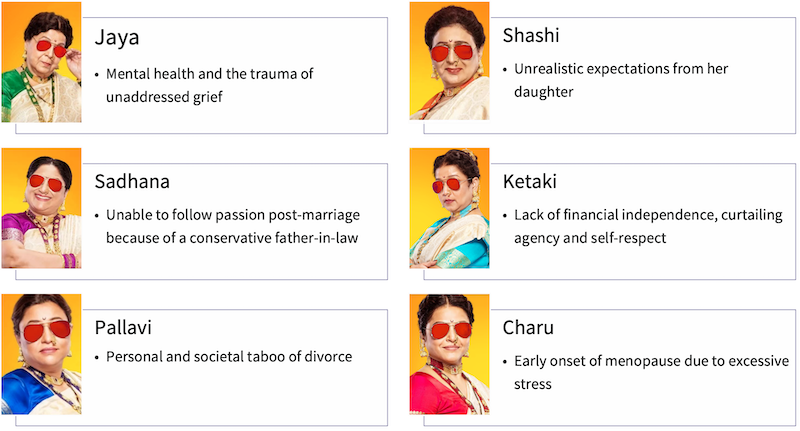
While being rooted in family values, the film did not shy away from taking a progressive stance on multiple relevant contemporary topics. This progressive stance not only made the film relevant for the female audience, but also inspiring.
The likelihood of such a narrative achieving widespread box office success across most Indian film industries may be low due to the audience profile of the industry being skewed towards male and younger viewers. According to the recently released report, Sizing The Cinema Report 2024, the gender distribution among Hindi theatergoers is 63% Male and 37% Female, while among Marathi theatergoers, it is 55% Male and 45% Female, as seen in the chart below.
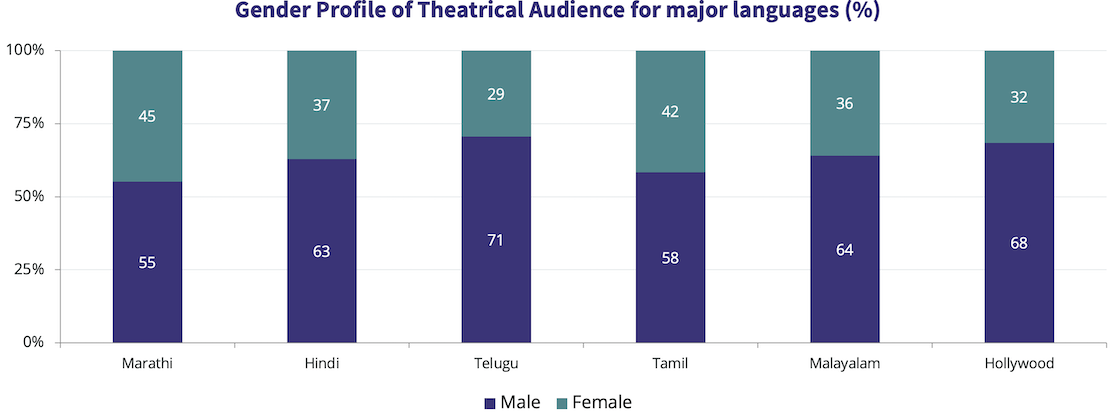
Furthermore, the 30+ age group constitutes only 36% of Hindi theatergoers, while among Marathi theatergoers, this age group comprises a significant 53%. As an outcome of that, Marathi audience have the highest median age (31.4 years) among all languages. The film’s storyline aligns well with the demographic profile of Marathi theatergoers, assisting its successful box office performance.
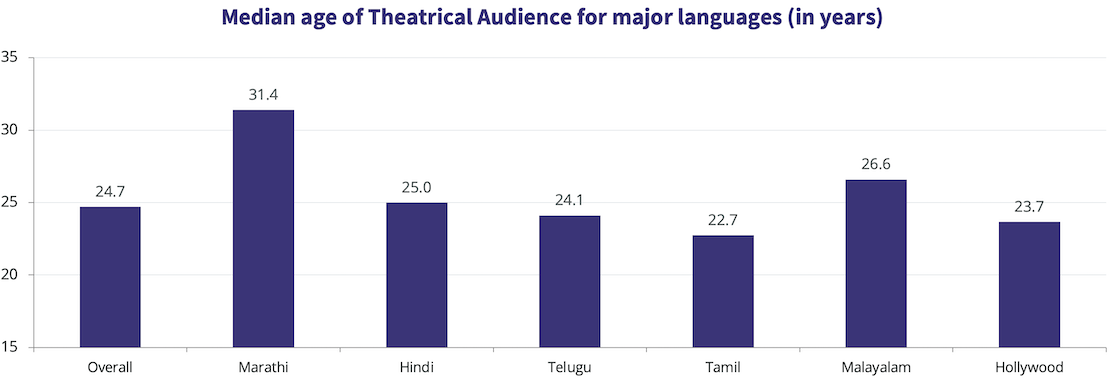
Additionally, the film’s teaser and trailer specifically worked towards targeting female audience with its relevant premise. The teaser explicitly mentioned the target audience with the line: "Mother, grandmother, wife, daughter, sister, mother-in-law, maternal aunt, paternal aunt… tell your kin, their movie is coming." Additionally, a quirky title, a catchy title track, and an ensemble cast of renowned Marathi actresses effectively marketed the film to this demographic. This is reflected in the film’s first-day collection of ₹1 Cr., not an easy feat for a Marathi film.
Well-differentiated from Hindi films
The Marathi film industry, coexisting with the Hindi film industry, faces a perpetual differentiation challenge. Given the significant overlap between Marathi and Hindi film audiences, Marathi films compete directly with Hindi films for audience attention and screen space. Thus, Marathi films must strive for distinctiveness in storytelling, to stand out in comparison to Hindi films being promoted with much higher marketing budgets.
This overlap in audience between Hindi and Marathi films underscores the need for Marathi films to offer culturally-resonant narratives that distinguish them from Hindi cinema. Unlike the Tamil or Telugu industries, which have limited competition from Hindi films, Marathi industry has a higher chance of success when it crafts stories deeply rooted in Marathi culture, presenting themes and conflicts that are challenging to replicate in Hindi cinema. The graphic below has some examples of top-grossing Marathi films and their unique yet rooted themes.
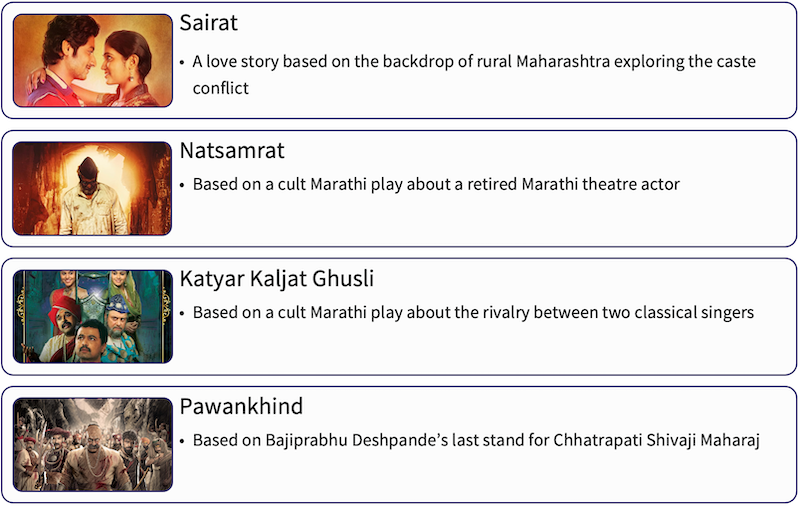
Baipan Bhari Deva effectively distinguishes itself by incorporating 'Mangalagaur', a unique Marathi cultural element within a universal family drama theme. This culturally-resonant aspect is deeply connected with the Marathi audiences. In the post-pandemic era, such themes are unlikely to be explored by Hindi cinema, making Baipan Bhari Deva a highly differentiated and compelling theatrical experience.
Preservation of identity through 'present', not 'past'
The struggle to preserve cultural identity among native Maharashtrians has persisted for four to five generations. In Mumbai, the financial capital with a vibrant cosmopolitan culture, the local politics and cinema leverage this ‘need to preserve identity’ to drive engagement. Successful Marathi films, such as Natsamrat, Katyar Kaljat Ghusli, Mi Shivaji Raje Bhosle Boltoy, and recent works like Digpal Lanjekar films on Chhatrapati Shivaji Maharaj, capitalize on 'past glory' to underscore the importance of safeguarding identity. This thematic focus has been a predominant driver of success in Marathi cinema.
However, Baipan Bhari Deva distinguishes itself by validating the efforts of Marathi women through ‘present tribulations’ rather than relying on past glory. With a light-hearted tone and minimal focus on identity crises, the film's contemporary Maharashtrian setting offers a fresh and differentiated narrative approach.
Our extensive research among Maharashtrian audiences highlights a crucial need to create a 'new age identity' that is free from the baggage of the past. Baipan Bhari Deva addresses this need effectively, centering on a cultural movement in present, which has the Mangalagaur ceremony at the core of it.
Conclusion
The journey of Baipan Bhari Deva over the past year marks a significant milestone in Marathi cinema. Without using conventional elements typically associated with top-grossing Marathi films, it achieved unprecedented success. Its ability to resonate with contemporary Marathi culture, and address present-day issues without delving into past glory, differentiates it. The film not only surpassed expectations, but has also carved its place as one of the biggest success stories of all time in Marathi cinema.

Ormax Cinematix's FBO: Accuracy update (February 2025)
This edition of our monthly blog summarises Ormax Cinematix's box office forecasts (FBO) for all major February 2025 releases vis-à-vis their actual box-office openings

Now streaming, at an app near you
An analysis of the streaming rights for India’s top theatrical films released between 2022 and 2024 reveals a duopolistic landscape with significant implications for the Indian theatrical industry
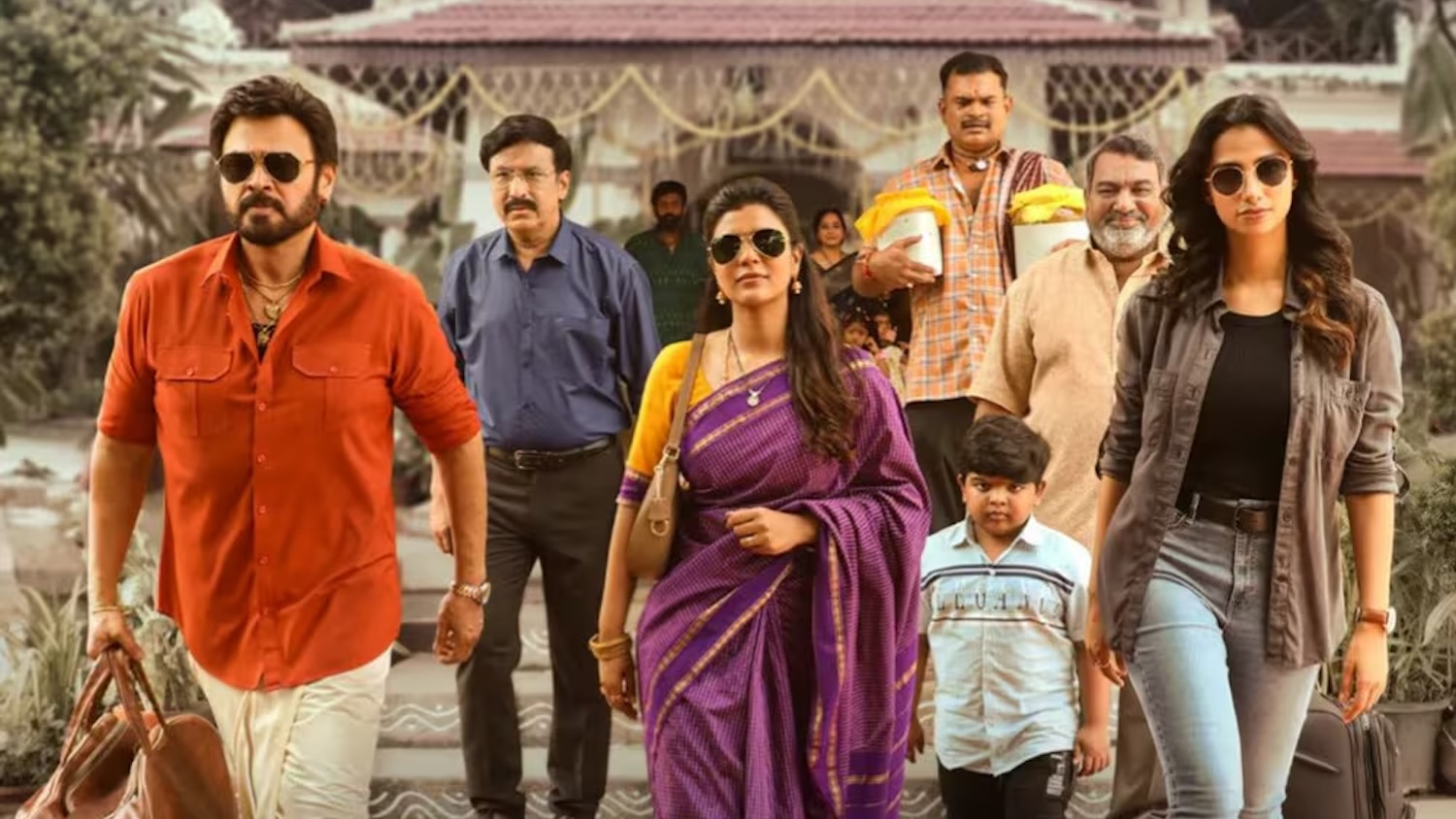
The India Box Office Report: January 2025
Driven by festival releases in Telugu language, 2025 started on a strong note, with gross box office of more than ₹1,000 Cr
Subscribe to stay updated with our latest insights
We use cookies to improve your experience on this site. To find out more, read our Privacy Policy